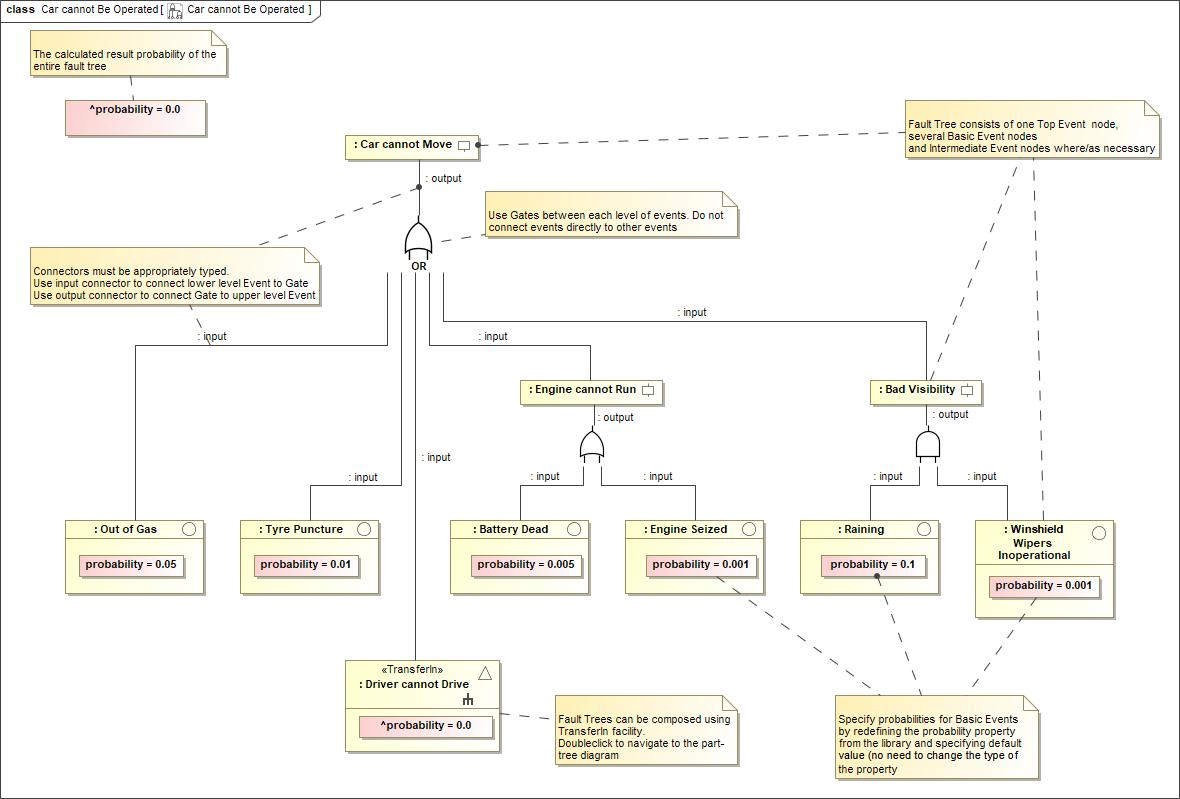The Fault Tree Analysis method is mainly used in safety and reliability engineering to understand how systems can fail or to determine the cause of system failure. This method also determines risk rates and identifies the best ways to reduce risk.
The Fault Tree Analysis plugin lets you create a Fault Tree Analysis diagram with the aid of different types of events and gates. An event is a basic item representing an event or a situation which could possibly lead to failure. A gate performs logical operations to figure out the failure reason. Generally, a gate has multiple inputs and a single output. The Fault Tree Analysis diagram is based on the UML Composite Structure Diagram and follows the Risk Analysis and Assessment Modeling Language (RAAML) methods.
The Fault Tree Analysis plugin lets you import a complete Fault Tree Analysis diagram as an event in your diagram, with the help of the Transfer In event. Fault Tree Analysis is a quantitative method; however, the plugin also lets you specify the probabilities of basic events. The probabilities of intermediate and top events are automatically calculated once you run the simulation with the help of the Cameo Simulation Toolkit. The fault tree can be simulated directly as-is. Also, the tree can be instantiated and multiple simulations can be run. You can interconnect the Fault Tree Analysis diagram and the main system model in the same project, with the help of Dependency matrices and Relevant To relationships. Additionally, you can create Libraries of typical failure types and reuse them across multiple projects.
Fault Tree Analysis diagram.
Prerequisites
To install and use the Fault Tree Analysis plugin, ensure that the following plugins are installed in your modeling tool:
- Cameo Safety and Reliability Analyzer
- ISO 26262 plugin
- Cameo Simulation Toolkit
You only need the Cameo Simulation Toolkit plugin to calculate the probabilities of the Intermediate and Top Events.
